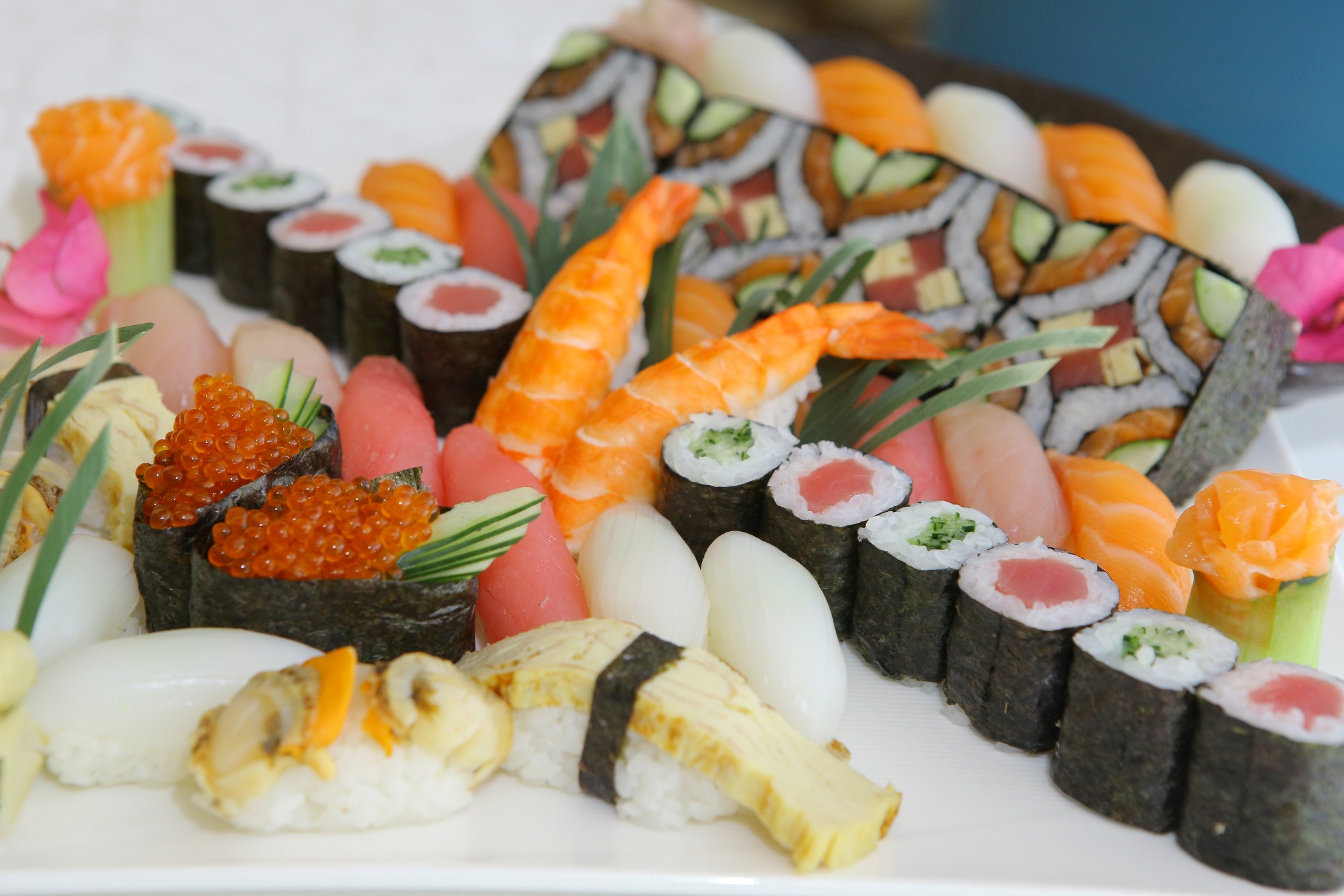Chef Steve Chua Kok Hua is all set to take part in the World Sushi Cup 2018 on August 23. He has been preparing for this ever since he emerged the champion in the qualifying competition last November, held in conjunction with the Global Sushi Academy training. This is a collaboration between the Norwegian Seafood Council and World Sushi Skills Institute, the only officially recognised sushi body in Japan.

A taste of the World Sushi Cup 2018 to come — Chef Chua presenting his Edomae Sushi together with Norwegian Ambassador Gunn Jorid Roset and Jon Erik Steenslid
The chef was introduced as Malaysia’s representative to the prestigious world sushi competition last week by the Norwegian Ambassador Gunn Jorid Roset and Jon Erik Steenslid, Regional Director (Southeast Asia) of Norwegian Seafood Council at a media event at the Ambassador’s Residence in Kuala Lumpur. They also presented him with a special chef jacket and knife.
Chef Chua showed his sushi skills in a fine and beautiful display of Edomae Sushi. He did a sushi-making demo before serving a delicious Norwegian salmon lunch – Salmon Bruschetta, Salmon Belly Consomme and Salmon Sushi Fiesta — ending with Tofu Cheesecake.
Hygienic handling of fish is paramount in any Japanese sushi chef’s rule book. At the Global Sushi Academy training, conducted by renowned sushi master Hirotoshi Ogawa, basic sushi-making skills and hygienic handling of seafood for raw consumption were the main focus. It’s the second time the training has been held in Malaysia. Chef Chua was adjudged the best for his skill and dedication to the art of sushi.
Chef Chua is understandably nervous about competing against 40 best sushi chefs from around the world. “I must thank the Norwegian Seafood Council for giving me this opportunity,” he said. “The World Sushi Cup competition is in two parts – Edomae Sushi and Creative Sushi which is the most challenging.” The chef, who co-owns a Japanese fusion restaurant – Two Chefs Lab — in Sungai Long, Kuala Lumpur, has had many years of experience working under a Japanese chef in a Japanese kitchen in a five-star hotel in Singapore.
Earlier Jon Erik Steenslid touched on why farmed Norwegian salmon and trout are safe to eat, drawing attention to the stringent measures taken to ensure that the fish are free from antibiotics or parasitic worms (which may only affect wild caught salmon).
“Salmon is the most tested food product in Norway,” he said. “No antibiotics are given to farmed salmon. There is also no chance of worms in raw salmon. If salmon or trout are blamed for food poisoning, it must be because of their unhygienic handling.”
Most of the sushi chains in Malaysia use salmon from Norway, hence this educational programme for sushi chefs run by the Norwegian Seafood Council is timely as it drives home to the chefs the importance of hygienic handling of salmon and other seafood.
“Malaysians prefer Norwegian salmon,” said Steenslid. “It’s a superfood and a complete source of protein.” Norwegian salmon is the sushi fish of choice in Japan too.
How it became this way was because in 1985 the Norwegian Fisheries Minister Thor Listau brought a delegation of seafood exporters, ministers and organizations to Japan. On their return he established a government initiative called Project Japan to promote the Norwegian seafood industry there. The project was so effective that it changed the culinary habits of the Japanese who started to eat salmon raw (beginning 1995), when their preferred fish for sushi and sashimi had always been tuna and sea bream.
The Japanese trend for Norwegian salmon sashimi and sushi caught on in China, Hong Kong and Singapore. Now Norway is the biggest exporter of salmon to China, most of which is eaten raw.











